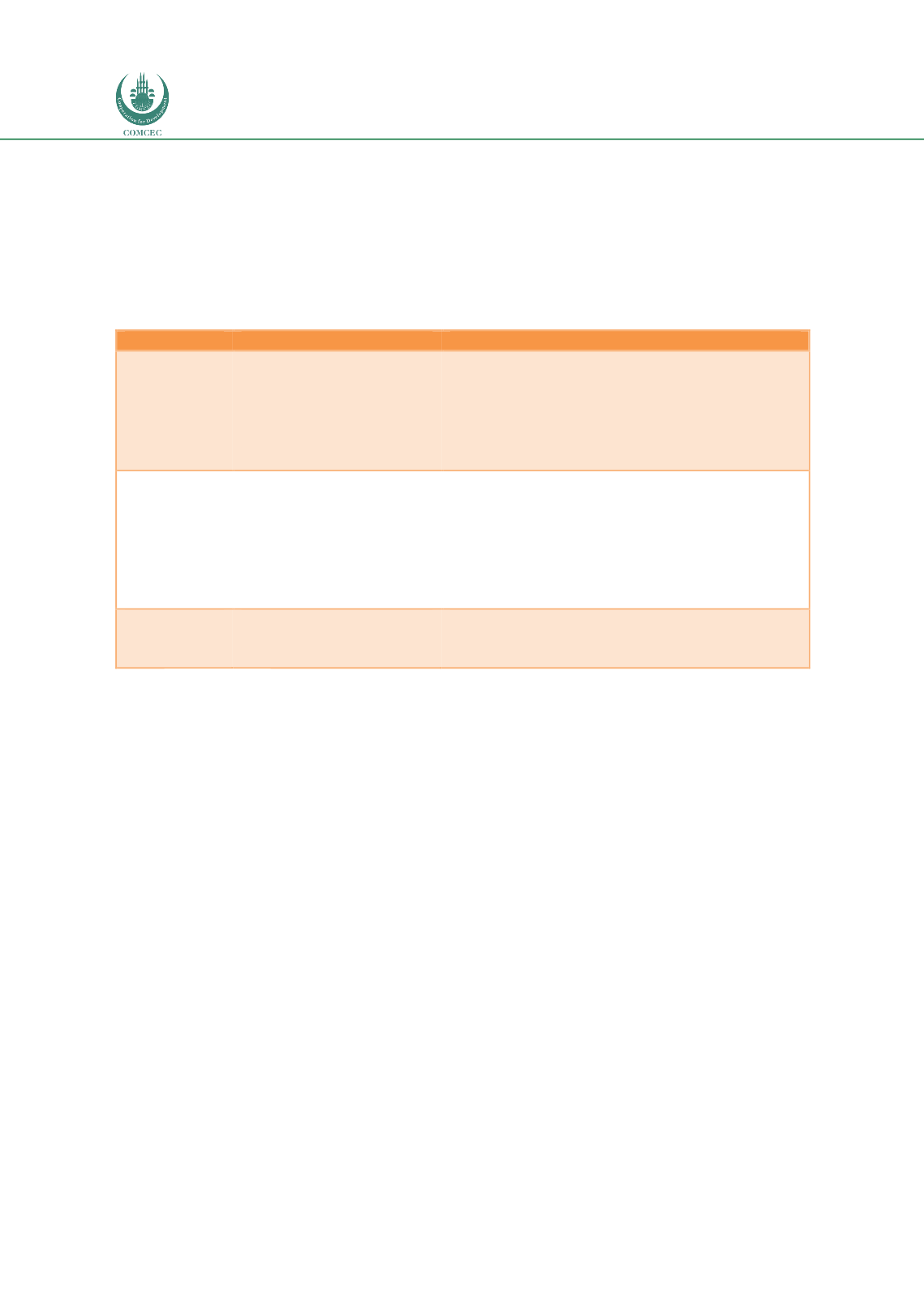

Improving Transnational Transport Corridors
In the OIC Member Countries: Concepts and Cases
76
the North-South corridor between Russia and Iran. Nevertheless, the report on Azerbaijan is
235 pages long and more detailed than the other reports containing 48 and 36 pages
respectively.
No information can be found with regard to the transport strategies of other corridor
countries.
Table 10: Corridor Features in National Transport Plans of Corridor Countries
Country
Document reviewed
Transport and corridor development features
Azerbaijan
Executive Summary of
Overview of the Azerbaijan
Transport System &
Transport Sector
Development Strategy
-
TRACECA National Secretary is involved in the
development of this document.
-
It acknowledges the need to improve the
TRACECA corridors to ensure future growth of
traffic, and to harmonize transport and customs
legislation.
Georgia
Georgia Transport Sector
Assessment, Strategy, and
Road Map (2014)
-
It recognizes that making the transport system
an integral part of the TRACECA and CAREC
corridors is vital for sustaining investments in
other trust areas.
-
It acknowledges that TRACECA would only be
competitive when connected and operated
efficiently to reduce travel time and costs.
Armenia
Armenia’s Transport
Outlook – Transport Sector
Master Plan
None
Source: Fimotions (2017).
4.3.3.
Economic factors
Despite some protectionist trends in parts of the world, globalization is here to stay and
transport systems are obviously the backbone of international trade. Guluzade (2017) claims
that developing infrastructure and transport services is more important for Azerbaijan’s
development than extracting raw materials. It is a remarkable, but not surprising, statement
from a country much dependent on crude oil. International trade is obviously the baseline also
for TRACECA although passenger transport is a factor for some corridor segments. The trade
matrix in
Table 12 shows that rather modest shares of each country’s foreign trade is related
to other TRACECA member states, except for Tajikistan (58% of imports and 18% of exports),
Georgia (44%/36%) and Moldavia (36%/41%).
















